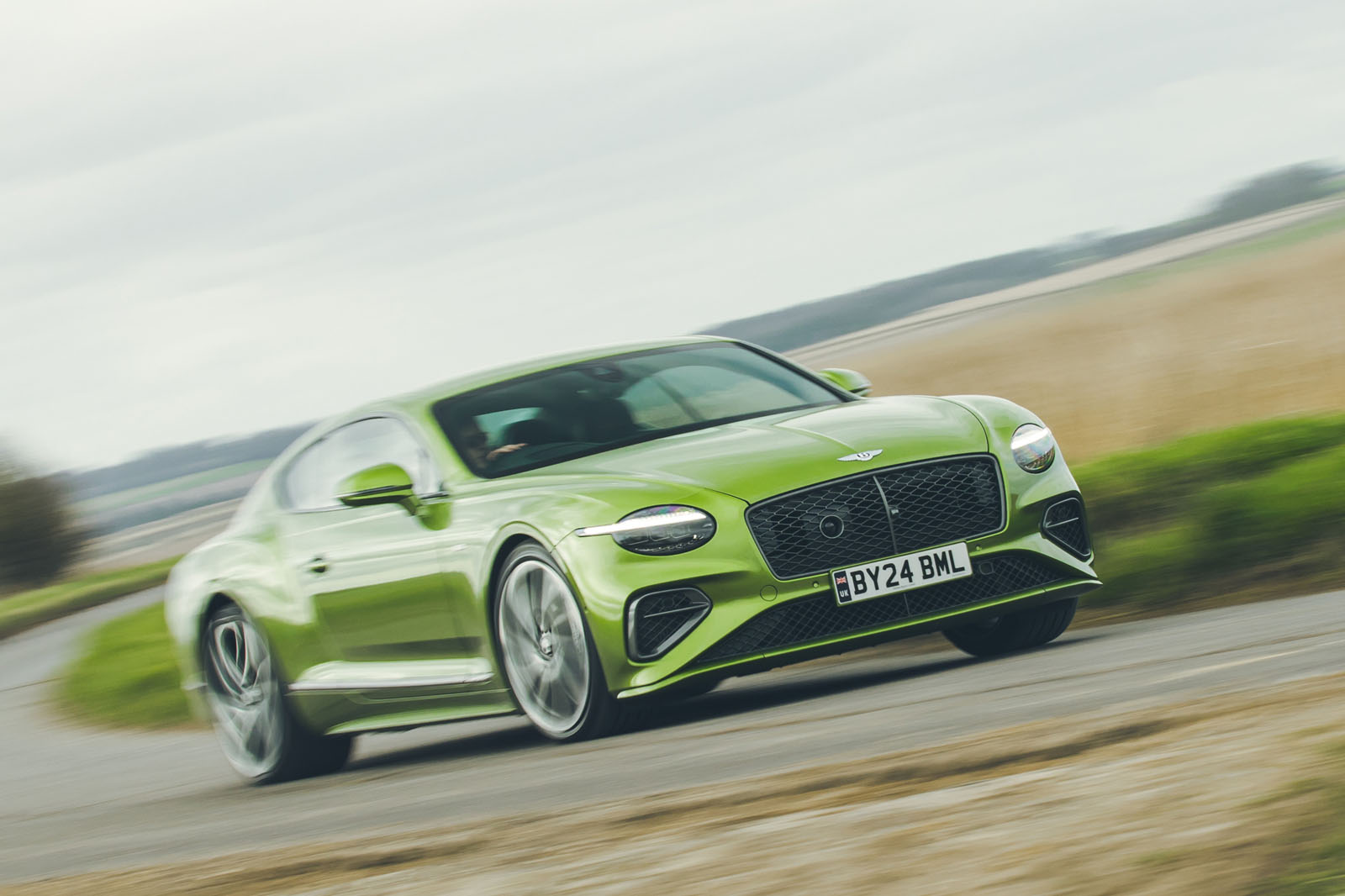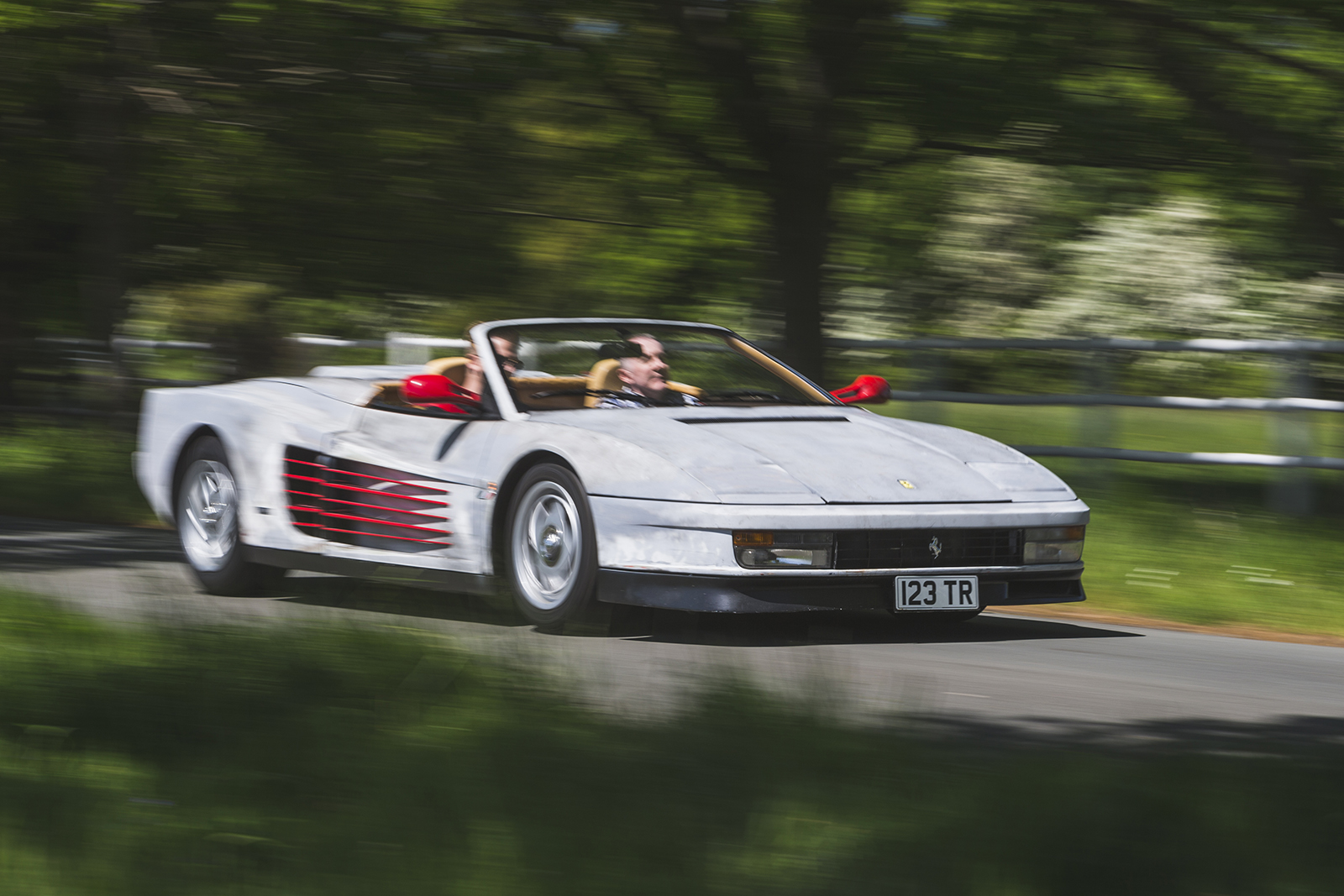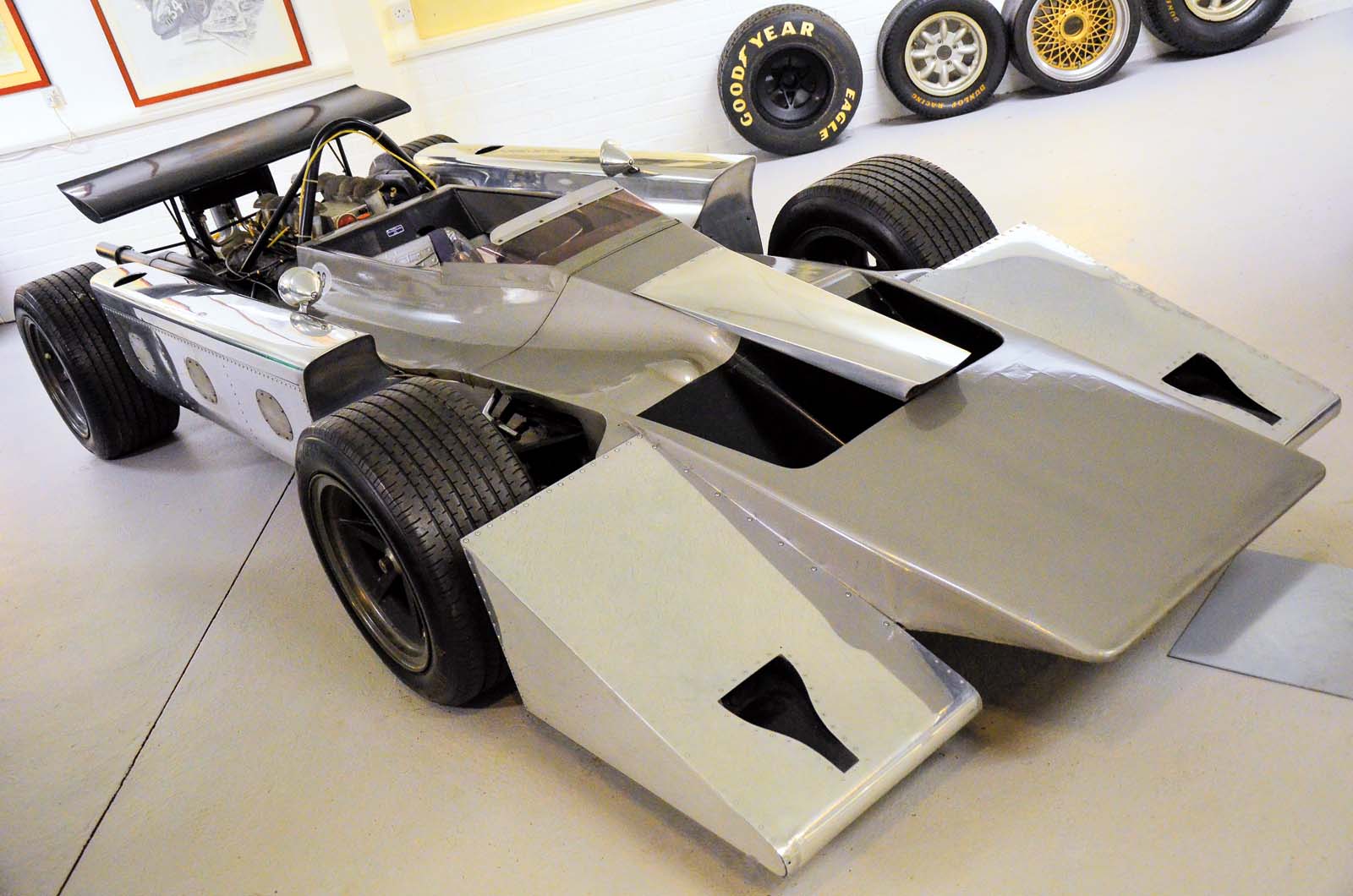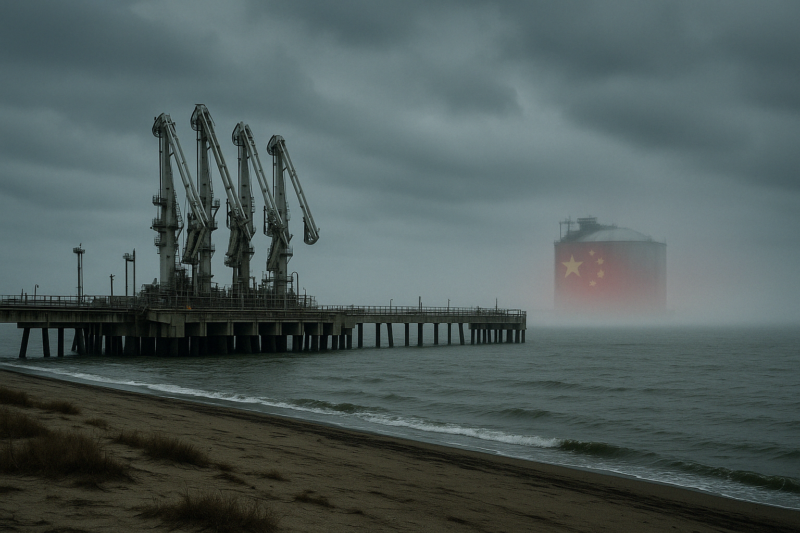Terrazas de los Andes has explored progressively higher altitudes in the winery’s quest for a fresher flavour profile, culminating in the creation of the Moët Hennessy-owned bodega’s remarkable Extremo Malbec. But Terrazas is also bullish about the prospects for Chardonnay, as Richard Woodard discovers.

Terrazas de los Andes’ newly unveiled icon wine,
Extremo Malbec, is well-named, and for more than one reason. Sourced from the bodega’s El Espinillo vineyard in
Gualtallary, located at an altitude of 1,650 metres above sea level, it ploughs an idiosyncratic furrow that, in Argentinian terms at least, is most un-Malbec-like.
Taste it blind and you might think you were in the northern Rhône; possibly even the Loire, given the fact that
Extremo’s inaugural vintage, 2021, weighs in at an atypical 12.9% ABV. If that sounds like relatively good news in pricing terms, given the introduction of the UK’s multi-runged new excise duty ladder, well… it’s priced at £165 a bottle, and an 84-bottle lot (also including a trip to Mendoza) sold at the recent Naples Winter Wine Festival in Florida for a cool US$500,000.
Estate director Lucas Löwi was born and raised in Mendoza, and witnessed the company’s acquisition of El Espinillo prior to spending 10 years at another Moët Hennessy property, Bodega Numanthia in Spain’s Toro region. “When I came back and I tasted the grapes from this vineyard, I decided that we needed to release a new icon wine,” he says.
Extremo and El Espinillo, claimed as the highest vineyard in the Uco Valley, are the culmination of Terrazas’ vinous journey into progressively loftier altitudes, driven by visionary Terrazas founder Hervé Birnie-Scott, dismissed by the locals as a ‘loco Francés’ (‘mad Frenchman’) as he trekked into the wilds of the upper Uco, altimeter in hand.
The Terrazas journey began with the discovery of an ungrafted Malbec vineyard planted in 1929 at Las Compuertas, Luján de Cuyo, at an altitude of 1,070m. Then the road led into the Uco Valley and Altamira (1,100m), Chacayes (1,200m) and, finally, El Espinillo in Gualtallary at 1,650m.
“In Mendoza, for every 100m of altitude there is an average temperature decrease of 1C,” says Löwi. “It takes two hours or so to get from Mendoza to Gualtallary, but it’s like travelling from the south of Spain, Andalusia, to the north of France.” The regeneratively farmed vineyard at El Espinillo is claimed to be the only one in Mendoza classified as Winkler Scale 1 – at the edge of viticultural viability.

If that all sounds very exciting and glamorous, the reality is rather less romantic. “It’s not for everybody to go that high,” says Löwi. “The challenges are huge. You have to assume very low yields, because most of the years the frost will affect you – the chances of frost that will destroy your vineyards are high.”
Terrazas has invested in wind-powered anti-frost measures to mitigate the risk, but even this offers no guarantees, says Löwi. “It’s extreme viticulture, but if you have the attitude to bring something unique, this is for sure a good way to show that Malbec can be something different.”
“Something different” is an understatement. Sub-13% ABV, some carbonic maceration and more neutral oak (Extremo is aged in wood for 12 months) creates a Malbec that majors on perfume rather than power, with herbal aromas that Löwi reckons conveys the local flora (El Espinillo has a strong emphasis on biodiversity). “We are still learning about this place, but I think it’s impossible to make this wine elsewhere,” he says. In other words, Extremo’s unique style is a reflection of its origin, rather than its grape variety.
Terrazas’ gradual ascent towards the Andes, coupled with similar projects undertaken by a number of other wineries in the area, can sometimes make it appear that Argentina’s bodegas are engaged in some kind of ‘altitude arms race’, egging each other on to see how high they can go.
“It’s not just because it’s higher, it’s better,” says
Löwi. “It’s the same in Spain – it’s not that the oldest vines are better. It’s the soils, and the philosophy of viticulture and winemaking. You can have fresher wines – so there is a clear impact – but it’s not the only thing. It’s the soils, the biodiversity, expressing the terroir through the grapes – the herbs, the flora in the place.”

Nor does he necessarily think that the so-called ‘arms race’ will continue anyway. El Espinillo was planted in 2008 and, given the sizeable costs involved in planting, installing drip irrigation and anti-frost measures – not to mention the low yields and climatic uncertainty – it offers a questionable business model for wineries lacking the deep pockets of Terrazas’ ultimate owner, LVMH.
But that’s not all. “The key issue is the water availability – we are in a desert,” says Löwi. “We are in a hydric crisis, and the government has limited access to water because of the crisis – no new holes, limited water rights. I don’t think we will see much more plantations at that height.”
If Extremo is successful, it may offer one answer to that perennial question posed to Argentina’s wine industry: what’s next after Malbec? In Extremo’s case, the answer is more Malbec, but not as we have known it. “We are really discovering a new Malbec style, much more floral, herbal, with much more tension and verticality on the wine, versus what we used to know about Malbec,” says Löwi. “We need that, and we need to evolve with Malbec.”
Extremo’s vineyard, El Espinillo, may supply another answer to that question too. As well as Malbec, Sauvignon Blanc, Pinot Noir and Chardonnay are planted here too. The Pinot – which is less than one hectare – is sold exclusively at Terrazas’ brand home, with Löwi saying: “We can make great Pinot Noirs in Argentina and we can surprise the world with that, but this won’t be our flagship.”
He is more bullish, however, about the prospects for Chardonnay, which he describes as “the other big bet” for Argentina. Terrazas Grand Chardonnay blends El Espinillo fruit with Chardonnay grown in another Gualtallary vineyard, Caicayén, located on the outskirts of Tupungato at the lower altitude of 1,230m.
“It’s a blend because we need the complexity and the mid-palate of the Chardonnay grown at 1,200m,” explains Löwi. “So far, when we taste only this [El Espinillo] Chardonnay, it is a straightforward Chardonnay, very fresh, but we like a bit of creaminess in the mid-palate.”
He concludes: “I’m quite optimistic with the Chardonnay from Argentina, as something we can explore beyond Malbec. I think we are bringing more and more consumers to a mountain Chardonnay with great freshness. I think that can be a great recruiter to Argentinian wines.”
Terrazas de los Andes Extremo Malbec 2021 is priced at £165 per bottle in the UK, and is not yet available in the market. Contect Moët Hennessy UK for further information

 Terrazas de los Andes’ newly unveiled icon wine, Extremo Malbec, is well-named, and for more than one reason. Sourced from the bodega’s El Espinillo vineyard in Gualtallary, located at an altitude of 1,650 metres above sea level, it ploughs an idiosyncratic furrow that, in Argentinian terms at least, is most un-Malbec-like.
Taste it blind and you might think you were in the northern Rhône; possibly even the Loire, given the fact that Extremo’s inaugural vintage, 2021, weighs in at an atypical 12.9% ABV. If that sounds like relatively good news in pricing terms, given the introduction of the UK’s multi-runged new excise duty ladder, well… it’s priced at £165 a bottle, and an 84-bottle lot (also including a trip to Mendoza) sold at the recent Naples Winter Wine Festival in Florida for a cool US$500,000.
Estate director Lucas Löwi was born and raised in Mendoza, and witnessed the company’s acquisition of El Espinillo prior to spending 10 years at another Moët Hennessy property, Bodega Numanthia in Spain’s Toro region. “When I came back and I tasted the grapes from this vineyard, I decided that we needed to release a new icon wine,” he says.
Extremo and El Espinillo, claimed as the highest vineyard in the Uco Valley, are the culmination of Terrazas’ vinous journey into progressively loftier altitudes, driven by visionary Terrazas founder Hervé Birnie-Scott, dismissed by the locals as a ‘loco Francés’ (‘mad Frenchman’) as he trekked into the wilds of the upper Uco, altimeter in hand.
The Terrazas journey began with the discovery of an ungrafted Malbec vineyard planted in 1929 at Las Compuertas, Luján de Cuyo, at an altitude of 1,070m. Then the road led into the Uco Valley and Altamira (1,100m), Chacayes (1,200m) and, finally, El Espinillo in Gualtallary at 1,650m.
“In Mendoza, for every 100m of altitude there is an average temperature decrease of 1C,” says Löwi. “It takes two hours or so to get from Mendoza to Gualtallary, but it’s like travelling from the south of Spain, Andalusia, to the north of France.” The regeneratively farmed vineyard at El Espinillo is claimed to be the only one in Mendoza classified as Winkler Scale 1 – at the edge of viticultural viability.
Terrazas de los Andes’ newly unveiled icon wine, Extremo Malbec, is well-named, and for more than one reason. Sourced from the bodega’s El Espinillo vineyard in Gualtallary, located at an altitude of 1,650 metres above sea level, it ploughs an idiosyncratic furrow that, in Argentinian terms at least, is most un-Malbec-like.
Taste it blind and you might think you were in the northern Rhône; possibly even the Loire, given the fact that Extremo’s inaugural vintage, 2021, weighs in at an atypical 12.9% ABV. If that sounds like relatively good news in pricing terms, given the introduction of the UK’s multi-runged new excise duty ladder, well… it’s priced at £165 a bottle, and an 84-bottle lot (also including a trip to Mendoza) sold at the recent Naples Winter Wine Festival in Florida for a cool US$500,000.
Estate director Lucas Löwi was born and raised in Mendoza, and witnessed the company’s acquisition of El Espinillo prior to spending 10 years at another Moët Hennessy property, Bodega Numanthia in Spain’s Toro region. “When I came back and I tasted the grapes from this vineyard, I decided that we needed to release a new icon wine,” he says.
Extremo and El Espinillo, claimed as the highest vineyard in the Uco Valley, are the culmination of Terrazas’ vinous journey into progressively loftier altitudes, driven by visionary Terrazas founder Hervé Birnie-Scott, dismissed by the locals as a ‘loco Francés’ (‘mad Frenchman’) as he trekked into the wilds of the upper Uco, altimeter in hand.
The Terrazas journey began with the discovery of an ungrafted Malbec vineyard planted in 1929 at Las Compuertas, Luján de Cuyo, at an altitude of 1,070m. Then the road led into the Uco Valley and Altamira (1,100m), Chacayes (1,200m) and, finally, El Espinillo in Gualtallary at 1,650m.
“In Mendoza, for every 100m of altitude there is an average temperature decrease of 1C,” says Löwi. “It takes two hours or so to get from Mendoza to Gualtallary, but it’s like travelling from the south of Spain, Andalusia, to the north of France.” The regeneratively farmed vineyard at El Espinillo is claimed to be the only one in Mendoza classified as Winkler Scale 1 – at the edge of viticultural viability.
 If that all sounds very exciting and glamorous, the reality is rather less romantic. “It’s not for everybody to go that high,” says Löwi. “The challenges are huge. You have to assume very low yields, because most of the years the frost will affect you – the chances of frost that will destroy your vineyards are high.”
Terrazas has invested in wind-powered anti-frost measures to mitigate the risk, but even this offers no guarantees, says Löwi. “It’s extreme viticulture, but if you have the attitude to bring something unique, this is for sure a good way to show that Malbec can be something different.”
“Something different” is an understatement. Sub-13% ABV, some carbonic maceration and more neutral oak (Extremo is aged in wood for 12 months) creates a Malbec that majors on perfume rather than power, with herbal aromas that Löwi reckons conveys the local flora (El Espinillo has a strong emphasis on biodiversity). “We are still learning about this place, but I think it’s impossible to make this wine elsewhere,” he says. In other words, Extremo’s unique style is a reflection of its origin, rather than its grape variety.
Terrazas’ gradual ascent towards the Andes, coupled with similar projects undertaken by a number of other wineries in the area, can sometimes make it appear that Argentina’s bodegas are engaged in some kind of ‘altitude arms race’, egging each other on to see how high they can go.
“It’s not just because it’s higher, it’s better,” says Löwi. “It’s the same in Spain – it’s not that the oldest vines are better. It’s the soils, and the philosophy of viticulture and winemaking. You can have fresher wines – so there is a clear impact – but it’s not the only thing. It’s the soils, the biodiversity, expressing the terroir through the grapes – the herbs, the flora in the place.”
If that all sounds very exciting and glamorous, the reality is rather less romantic. “It’s not for everybody to go that high,” says Löwi. “The challenges are huge. You have to assume very low yields, because most of the years the frost will affect you – the chances of frost that will destroy your vineyards are high.”
Terrazas has invested in wind-powered anti-frost measures to mitigate the risk, but even this offers no guarantees, says Löwi. “It’s extreme viticulture, but if you have the attitude to bring something unique, this is for sure a good way to show that Malbec can be something different.”
“Something different” is an understatement. Sub-13% ABV, some carbonic maceration and more neutral oak (Extremo is aged in wood for 12 months) creates a Malbec that majors on perfume rather than power, with herbal aromas that Löwi reckons conveys the local flora (El Espinillo has a strong emphasis on biodiversity). “We are still learning about this place, but I think it’s impossible to make this wine elsewhere,” he says. In other words, Extremo’s unique style is a reflection of its origin, rather than its grape variety.
Terrazas’ gradual ascent towards the Andes, coupled with similar projects undertaken by a number of other wineries in the area, can sometimes make it appear that Argentina’s bodegas are engaged in some kind of ‘altitude arms race’, egging each other on to see how high they can go.
“It’s not just because it’s higher, it’s better,” says Löwi. “It’s the same in Spain – it’s not that the oldest vines are better. It’s the soils, and the philosophy of viticulture and winemaking. You can have fresher wines – so there is a clear impact – but it’s not the only thing. It’s the soils, the biodiversity, expressing the terroir through the grapes – the herbs, the flora in the place.”
 Nor does he necessarily think that the so-called ‘arms race’ will continue anyway. El Espinillo was planted in 2008 and, given the sizeable costs involved in planting, installing drip irrigation and anti-frost measures – not to mention the low yields and climatic uncertainty – it offers a questionable business model for wineries lacking the deep pockets of Terrazas’ ultimate owner, LVMH.
But that’s not all. “The key issue is the water availability – we are in a desert,” says Löwi. “We are in a hydric crisis, and the government has limited access to water because of the crisis – no new holes, limited water rights. I don’t think we will see much more plantations at that height.”
If Extremo is successful, it may offer one answer to that perennial question posed to Argentina’s wine industry: what’s next after Malbec? In Extremo’s case, the answer is more Malbec, but not as we have known it. “We are really discovering a new Malbec style, much more floral, herbal, with much more tension and verticality on the wine, versus what we used to know about Malbec,” says Löwi. “We need that, and we need to evolve with Malbec.”
Extremo’s vineyard, El Espinillo, may supply another answer to that question too. As well as Malbec, Sauvignon Blanc, Pinot Noir and Chardonnay are planted here too. The Pinot – which is less than one hectare – is sold exclusively at Terrazas’ brand home, with Löwi saying: “We can make great Pinot Noirs in Argentina and we can surprise the world with that, but this won’t be our flagship.”
He is more bullish, however, about the prospects for Chardonnay, which he describes as “the other big bet” for Argentina. Terrazas Grand Chardonnay blends El Espinillo fruit with Chardonnay grown in another Gualtallary vineyard, Caicayén, located on the outskirts of Tupungato at the lower altitude of 1,230m.
“It’s a blend because we need the complexity and the mid-palate of the Chardonnay grown at 1,200m,” explains Löwi. “So far, when we taste only this [El Espinillo] Chardonnay, it is a straightforward Chardonnay, very fresh, but we like a bit of creaminess in the mid-palate.”
He concludes: “I’m quite optimistic with the Chardonnay from Argentina, as something we can explore beyond Malbec. I think we are bringing more and more consumers to a mountain Chardonnay with great freshness. I think that can be a great recruiter to Argentinian wines.”
Terrazas de los Andes Extremo Malbec 2021 is priced at £165 per bottle in the UK, and is not yet available in the market. Contect Moët Hennessy UK for further information
Nor does he necessarily think that the so-called ‘arms race’ will continue anyway. El Espinillo was planted in 2008 and, given the sizeable costs involved in planting, installing drip irrigation and anti-frost measures – not to mention the low yields and climatic uncertainty – it offers a questionable business model for wineries lacking the deep pockets of Terrazas’ ultimate owner, LVMH.
But that’s not all. “The key issue is the water availability – we are in a desert,” says Löwi. “We are in a hydric crisis, and the government has limited access to water because of the crisis – no new holes, limited water rights. I don’t think we will see much more plantations at that height.”
If Extremo is successful, it may offer one answer to that perennial question posed to Argentina’s wine industry: what’s next after Malbec? In Extremo’s case, the answer is more Malbec, but not as we have known it. “We are really discovering a new Malbec style, much more floral, herbal, with much more tension and verticality on the wine, versus what we used to know about Malbec,” says Löwi. “We need that, and we need to evolve with Malbec.”
Extremo’s vineyard, El Espinillo, may supply another answer to that question too. As well as Malbec, Sauvignon Blanc, Pinot Noir and Chardonnay are planted here too. The Pinot – which is less than one hectare – is sold exclusively at Terrazas’ brand home, with Löwi saying: “We can make great Pinot Noirs in Argentina and we can surprise the world with that, but this won’t be our flagship.”
He is more bullish, however, about the prospects for Chardonnay, which he describes as “the other big bet” for Argentina. Terrazas Grand Chardonnay blends El Espinillo fruit with Chardonnay grown in another Gualtallary vineyard, Caicayén, located on the outskirts of Tupungato at the lower altitude of 1,230m.
“It’s a blend because we need the complexity and the mid-palate of the Chardonnay grown at 1,200m,” explains Löwi. “So far, when we taste only this [El Espinillo] Chardonnay, it is a straightforward Chardonnay, very fresh, but we like a bit of creaminess in the mid-palate.”
He concludes: “I’m quite optimistic with the Chardonnay from Argentina, as something we can explore beyond Malbec. I think we are bringing more and more consumers to a mountain Chardonnay with great freshness. I think that can be a great recruiter to Argentinian wines.”
Terrazas de los Andes Extremo Malbec 2021 is priced at £165 per bottle in the UK, and is not yet available in the market. Contect Moët Hennessy UK for further information 









































































































































































